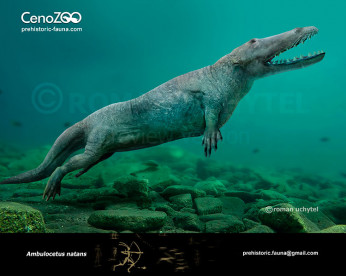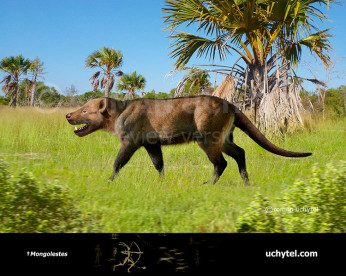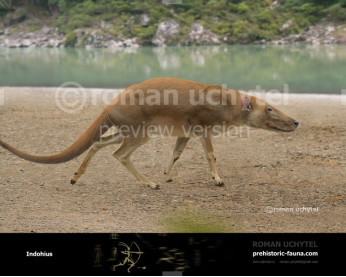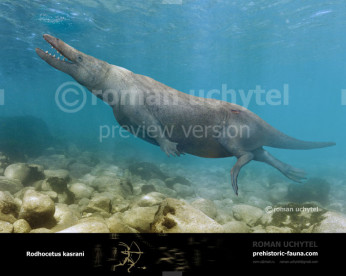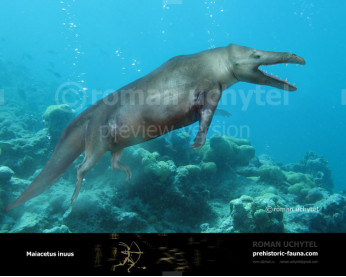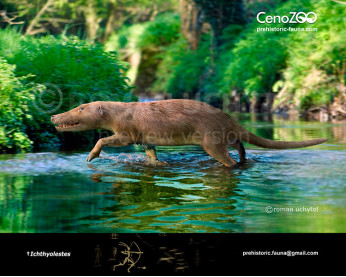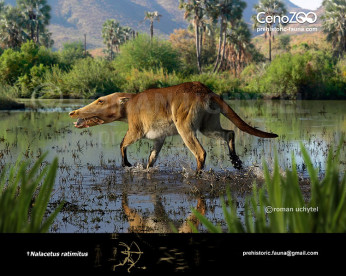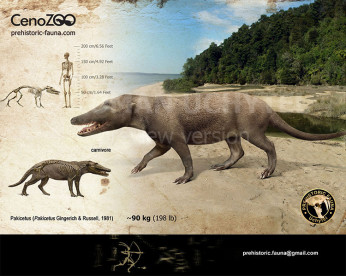Pakicetus
8989Pakicetus (Pakicetus Gingerich & Russell, 1981)
Order: Cetacea
Suborder: Archaeoceti
Family: †Pakicetidae
Temporal range: during the Eocene of Pakistan
Dimensions: length - 1,8 m, weight - 30 - 90 kg
A typical representative: Pakicetus inachus Gingerich & Russell, 1981
Pakicetus is a genus of extinct predator mammal which belonged to suborder Achaeoceti. It is the most ancient of presently-known direct ancestors of modern-day whales that lived approximately 48 mln years ago and adjusted to searching for food under water. It was endemic to the territory of present-day Pakistan.
This prehistoric whale remained semi-aquatic as the modern-day otter. Its ear started to adapt to hearing underwater but still could not endure high pressure. It had massive jaws revealing its predatory nature, closely set eyes, and muscular tail. Its sharp teeth were suited to grasp slimy fish.
Its exterior was reminiscent of that of a dog, but with hooves on fingersg thin tail; it had a skeleton suited for terrestrial life no worse than of any other Ungulata. Probably, it had webs between fingers. Its main peculiarity was that its malleolar bones were similar to those of pigs, sheep and hippos. Its skull on the other hand was very similar to those of whales.
The earliest ancestors of all Ungulata mammals were probably partly carnivorous or omnivorous. The ancestors of whales diverged from Artiodactyla and transferred to the aquatic lifestyle already after Artiodactyla themselves diverged from their common ancestors with mesonychids.
Pakicetus (Pakicetus Gingerich & Russell, 1981)
Order: Cetacea
Suborder: Archaeoceti
Family: †Pakicetidae
Temporal range: during the Eocene of Pakistan
Dimensions: length - 1,8 m, weight - 30 - 90 kg
A typical representative: Pakicetus inachus Gingerich & Russell, 1981
Pakicetus is a genus of extinct predator mammal which belonged to suborder Achaeoceti. It is the most ancient of presently-known direct ancestors of modern-day whales that lived approximately 48 mln years ago and adjusted to searching for food under water. It was endemic to the territory of present-day Pakistan.
This prehistoric whale remained semi-aquatic as the modern-day otter. Its ear started to adapt to hearing underwater but still could not endure high pressure. It had massive jaws revealing its predatory nature, closely set eyes, and muscular tail. Its sharp teeth were suited to grasp slimy fish.
Its exterior was reminiscent of that of a dog, but with hooves on fingersg thin tail; it had a skeleton suited for terrestrial life no worse than of any other Ungulata. Probably, it had webs between fingers. Its main peculiarity was that its malleolar bones were similar to those of pigs, sheep and hippos. Its skull on the other hand was very similar to those of whales.
The earliest ancestors of all Ungulata mammals were probably partly carnivorous or omnivorous. The ancestors of whales diverged from Artiodactyla and transferred to the aquatic lifestyle already after Artiodactyla themselves diverged from their common ancestors with mesonychids.

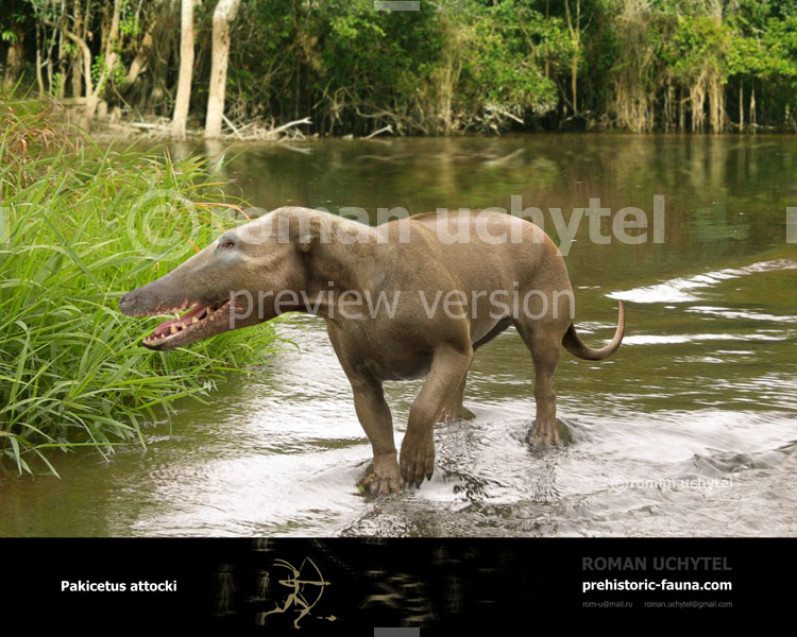
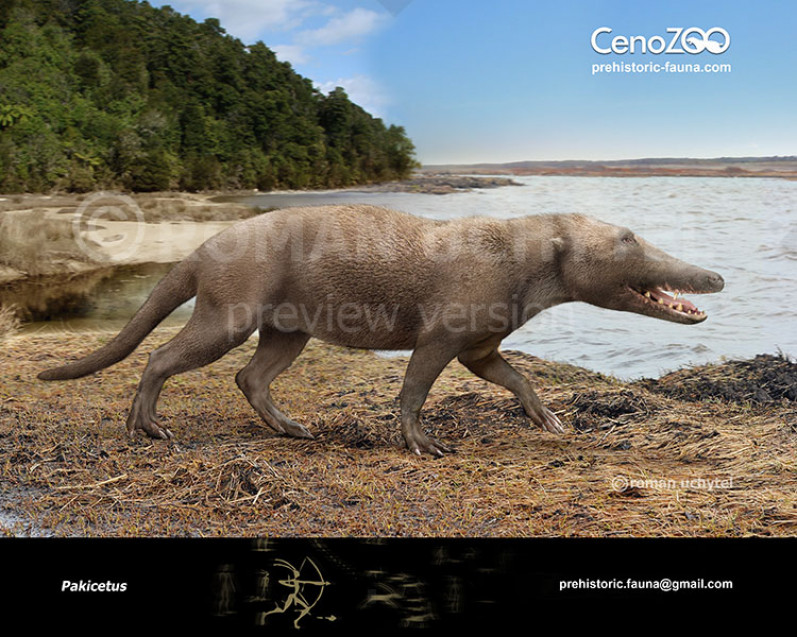
3-797x638.jpg)
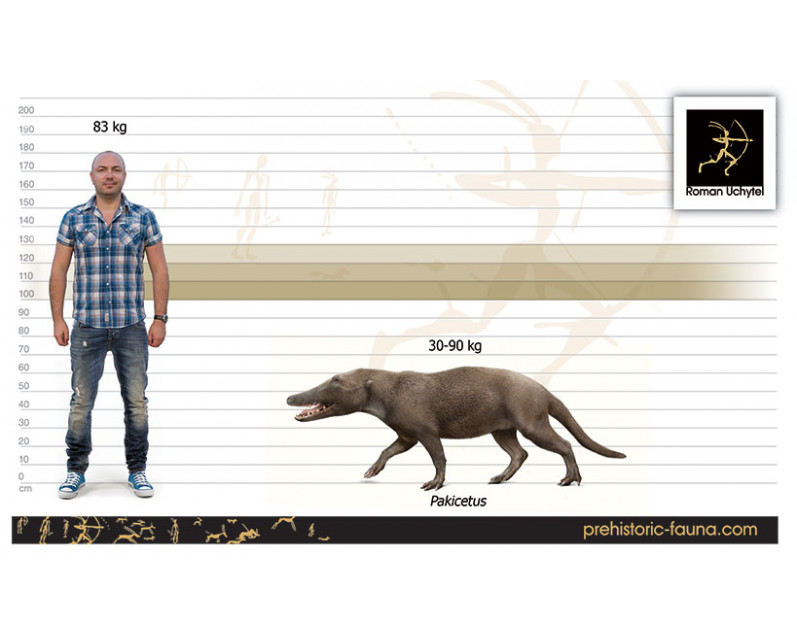
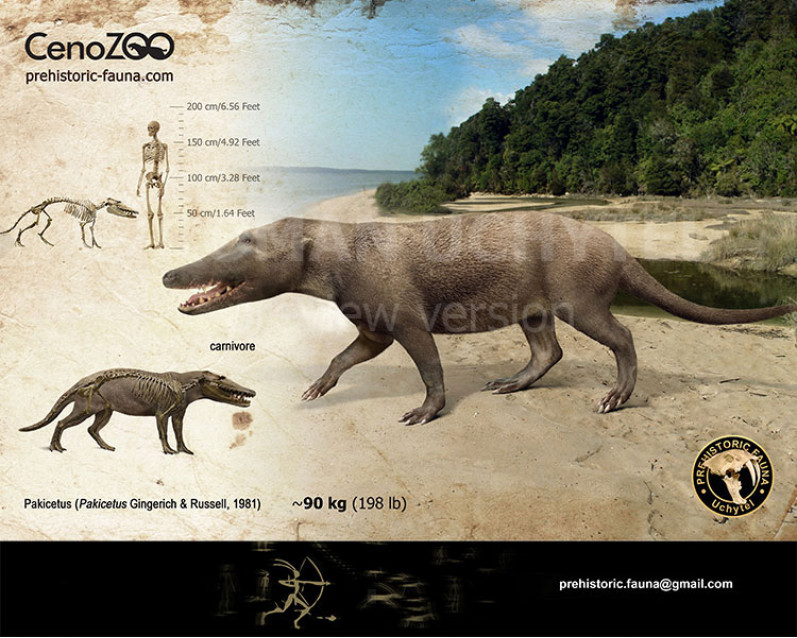


3-70x56.jpg)


